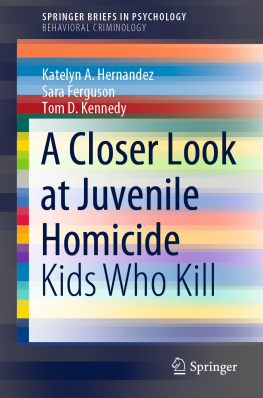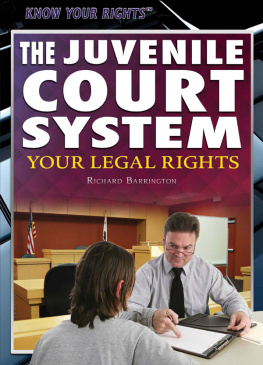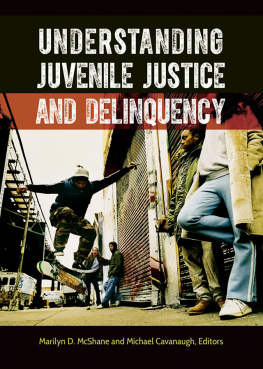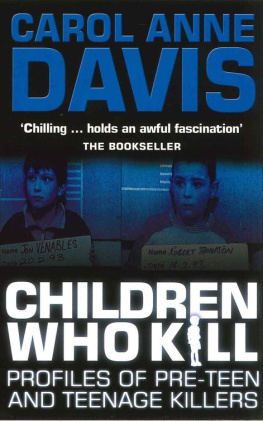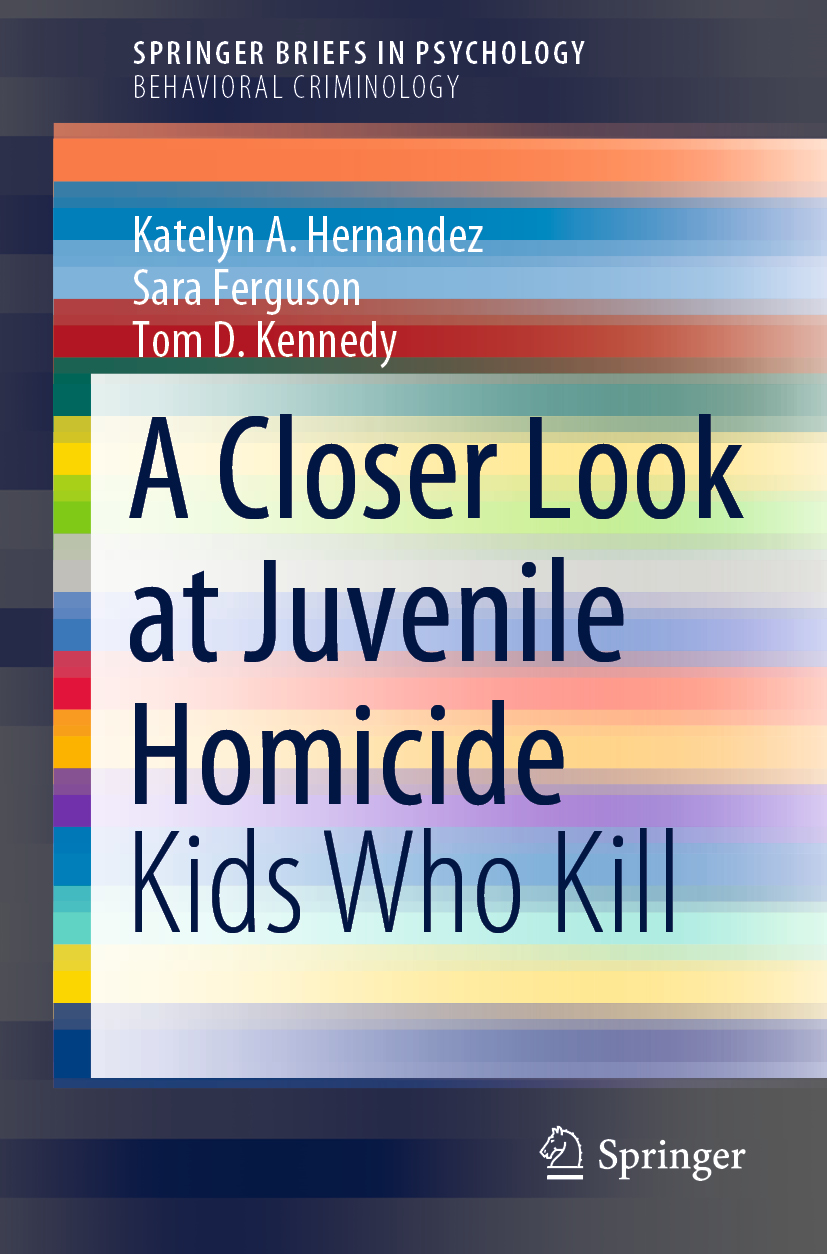SpringerBriefs in Psychology SpringerBriefs in Behavioral Criminology
Behavioral Criminology is a multidisciplinary approach that draws on behavioral research for the application of behavioral theories and methods to assessment, prevention, and intervention efforts directed toward violent crime and criminal behavior. Disciplines relevant to this field are criminology; criminal justice (law enforcement and corrections); forensic, correctional, and clinical psychology and psychiatry: neuropsychology, neurobiology, conflict and dispute resolution; sociology, and epidemiology. Areas of study and application include, but are not limited to: specific crimes and perpetrators (e.g., homicide and sex crimes, crimes against children, child exploitation, domestic, school, and workplace violence), topics of current national and international interest and concern (e.g., terrorism and counter terrorism, cyber crime), and strategies geared toward evaluation, identification, and interdiction with regard to criminal acts (e.g., hostage negotiation, criminal investigative analysis, threat and risk assessment). The aim of the proposed Briefs is to provide practitioners and researchers with information, data, and current best practices on important and timely topics in Behavioral Criminology. Each Brief will include a review of relevant research in the area, original data, implications of findings, case illustrations (where relevant), and recommendations for directions that future efforts might take.
More information about this subseries at http://www.springer.com/series/10850
Katelyn A. Hernandez
Nova Southeastern University, Davie, FL, USA
Sara Ferguson
Nova Southeastern University, West Miami, FL, USA
Tom D. Kennedy
Nova Southeastern University, Davie, FL, USA
ISSN 2192-8363 e-ISSN 2192-8371
SpringerBriefs in Psychology
ISSN 2194-1866 e-ISSN 2194-1874
SpringerBriefs in Behavioral Criminology
ISBN 978-3-030-38167-7 e-ISBN 978-3-030-38168-4
https://doi.org/10.1007/978-3-030-38168-4
The Author(s), under exclusive license to Springer Nature Switzerland AG 2020
This work is subject to copyright. All rights are solely and exclusively licensed by the Publisher, whether the whole or part of the material is concerned, specifically the rights of translation, reprinting, reuse of illustrations, recitation, broadcasting, reproduction on microfilms or in any other physical way, and transmission or information storage and retrieval, electronic adaptation, computer software, or by similar or dissimilar methodology now known or hereafter developed.
The use of general descriptive names, registered names, trademarks, service marks, etc. in this publication does not imply, even in the absence of a specific statement, that such names are exempt from the relevant protective laws and regulations and therefore free for general use.
The publisher, the authors and the editors are safe to assume that the advice and information in this book are believed to be true and accurate at the date of publication. Neither the publisher nor the authors or the editors give a warranty, expressed or implied, with respect to the material contained herein or for any errors or omissions that may have been made. The publisher remains neutral with regard to jurisdictional claims in published maps and institutional affiliations.
This Springer imprint is published by the registered company Springer Nature Switzerland AG
The registered company address is: Gewerbestrasse 11, 6330 Cham, Switzerland
List of Figures
Fig. 1.1 Juvenile homicide rates, 19802016 (OJJDP statistical briefing book.Online. https://www.ojjdp.gov/ojstatbb/offenders/qa03105.asp?qaDate=2016)
Fig. 1.2 Juvenile homicide offenders by age, 19802016 (OJJDP statistical briefing book.Online. https://www.ojjdp.gov/ojstatbb/offenders/qa03105.asp?qaDate=2016)
Fig. 1.3 Juvenile homicide offenders by sex, 19802016(OJJDP statistical briefing book.Online. https://www.ojjdp.gov/ojstatbb/offenders/qa03105.asp?qaDate=2016)
Fig. 1.4 Juvenile homicide offenders by race, 19802016 (OJJDP statistical briefing book.Online. https://www.ojjdp.gov/ojstatbb/offenders/qa03105.asp?qaDate=2016)
About the Authors
Katelyn A. Hernandez, M.S.
is in her 5th year of clinical training in the clinical psychology doctoral program at Nova Southeastern University (NSU) located in Fort Lauderdale, FL, and is part of her programs forensic concentration. Prior to attending NSU, she received her Bachelors degree in Psychology from the University of California San Diego. Her primary clinical interests include criminal and civil forensic evaluations and complex trauma. Currently, Ms. Hernandez is completing her predoctoral clinical psychology internship at Eastern Virginia Medical School with her main rotation being at Eastern State Hospital, a psychiatric hospital located in Williamsburg, VA. As part of her internship training, she conducts various forensic evaluations including competency and sanity evaluations. In addition to her work with pre-trial defendants, she works with patients adjudicated Not Guilty by Reason of Insanity (NGRI), conducting risk assessments, and writing reports for the court. Following the internship, she will complete her postdoctoral fellowship at the Denver Forensic Institute for Research, Service, and Training (Denver FIRST). Her practica training has included forensic evaluations and correctional psychological services, along with outpatient psychotherapy services with individuals who have a history of abuse and trauma. Additionally, she has conducted Neuropsychological evaluations with Veterans presenting with traumatic brain injuries and other neurological conditions. She has worked as a forensic coordinator at a Mental Health Diversion program, conducting psychological evaluations with defendants with a history of serious and persistent mental illness. She has also worked as an assistant at a private forensic psychology practice, conducting evaluations for criminal and civil cases involving trauma. Her research interests include the impact of childhood adversity and trauma on adult functioning, juvenile delinquency, juvenile homicide, resilience in at-risk youth, death penalty, domestic violence, and serial homicide.
Sara Ferguson, M.S.
is currently a 5th year psychology intern in the forensic concentration at Nova Southeastern Universitys Clinical Psychology doctoral program. Prior to attending NSU, she received her Bachelors degree in Psychology from Florida State University. Ms. Fergusons clinical interests include forensic assessment and contemporary relational psychotherapy in the areas of complex trauma, serious mental illness, and autism spectrum disorder. Her clinical training compliments her interests, as she has worked in a variety of settings and with highly diverse populations. Her practica training has included forensic evaluations and correctional psychological services, along with outpatient psychotherapy services with individuals having chronic, and serious mental illness. Further, Ms. Ferguson has provided psychological interventions and assessments in both inpatient and outpatient hospital settings for Veterans presenting with dual diagnoses of substance abuse and a range of pathology. Additionally, she has provided clinical and educational consultation and support to individuals with autism spectrum disorder, along with their families and related professionals at the University of Miami-Nova Southeastern University Center for Autism and Related Disabilities (UM-NSU CARD) for the last seven years. Currently, Ms. Ferguson is completing her Predoctoral Internship in Clinical Psychology at the Trauma Resolution Integration Program (TRIP) housed at NSUs Psychological Services Center, an outpatient clinic that provides sliding scale psychotherapy services in Davie, Florida. Ms. Fergusons research interests are primarily in the forensic domain, including serial homicide, juvenile offending, neuropsychology of crime, death penalty, and domestic violence.

